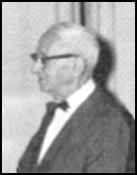
1883-1964 |
 |
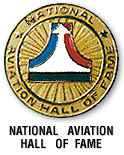 |
To visit his entry on this site, first click on National Aviation Hall of Fame to go to the homepage. Next, highlight and click on "Enshrinees List" at the lower left corner of the page. You will find an alphabetical listing of all enshrinees on this page. Then highlight and click on his name. |
 |
|
From Bulletin No. 1 The Aeronautic Society |
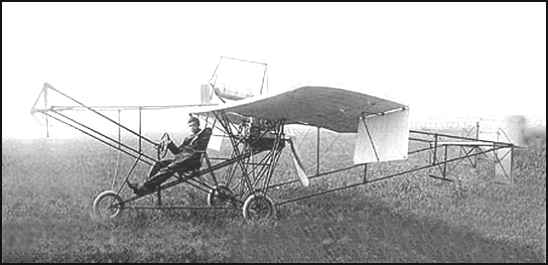 |
Photo Courtesy of the Cradle of Aviation Museum Originally from the Long Island History website |
|
Risking life and limb, they turn LI into a buzzing center of innovation in aviation By Laura Muha Dawn tinged the sky over the Hempstead Plains as dentist Henry Walden, cigar clamped between his teeth, climbed into his homemade airplane and opened the throttle. The engine roared and the rear-mounted mahogany propeller whirled furiously. Walden's two assistants, gripping the tail to prevent the plane from shooting forward, grimaced as they were hit in the face by a spray of engine-lubricating castor oil. Their hair and dusters, caught in the propeller wash, streamed straight out behind them. A boy standing nearby made the sign of the cross. It was Aug. 3, 1910, barely 13 months since pioneer aviator Glenn Curtiss had taken off from a nearby field, becoming the first person to successfully fly a plane on Long Island. But in that short time, the treeless grasslands of central Nassau -- formed by a glacial outwash thousands of years before -- had become a well-established airfield. On almost any day of the week, amateur aviators like Walden flocked there to test the principles of aerodynamics in airplanes that were little more than motorized box kites. Editor's Note: To read the rest of this fascinating article by Laura Muha, a freelance writer, which is found on the Long Island History website, just click on: While there, I encourage you to read the other related articles. They represent a priceless resource and are interesting for their own sake. |
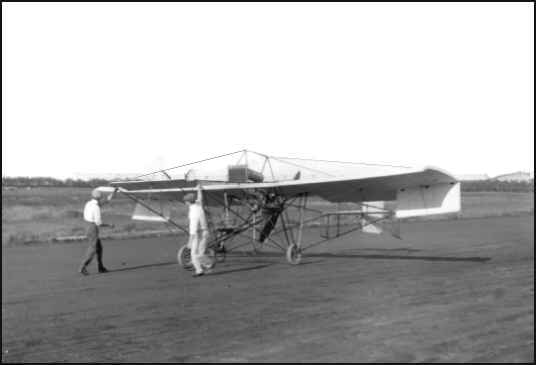 |
|
This monoplane was flown at the 1911 Brighton Beach Air Meet. It probably would have been flown by its designer, Dr. Henry W. Walden Ancient Aviators Website |
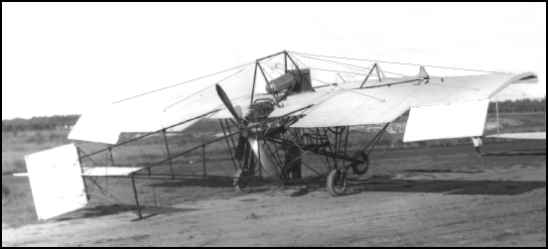 |
|
This monoplane was flown at the 1911 Brighton Beach Air Meet. It probably would have been flown by its designer, Dr. Henry W. Walden Ancient Aviators Website |
|
Encouraged by the success of its previous ventures particularly those of 1910, the Aero Club of St. Louis decided to stage two air meets in 1911. Although the city's aviation fame came from free ballooning, both tournaments would concentrate on heavier-than-air craft, in keeping with the latest developments in aviation. St. Louis had put in its bid for the annual Gordon Bennett Race, but it lost out to Kansas City. Pilots from the Aero Club of St. Louis, however, swept the first three places in the National Elimination Race, also held in Kansas City, on July 10: Frank P. Lahm in the St. Louis IV, John Beery in the Million Population Club, and William Assmann in the Miss Sophia. All three thereby earned places on the American team for the international race, in which they figured second, fourth and fifth, respectively. On September 5, 1911, Albert Bond Lambert signed an agreement with A. Roy Knabenshue, manager of the Wright Company, whereby the Wrights would supply three pilots and biplanes in return for 25 percent of the gross receipts of the meet. The three aviators - Howard Gill, J. Clifford Turpin, and P.O. Parmalee - were to fly every day but October 15, because of the rule of the Wright Company against Sunday flights. Also entered were Dr. Henry Walden of Mineola, Long Island, with his picturesque Antoinette monoplane; Horace Kearney and John D. Cooper of St. Louis with Curtiss biplanes; Alfred Elton and Andrew Drew of St. Louis with Wright biplanes; George Beatty; and Walter Brookins. |
 |
Elmo N Pickerill while Louis W. Bleser looks on. |
|
Dr. Henry W. Walden was the guest of honor at a meeting at Mitchel Field Air Force Base, December 4, 1959 celebrating the 50th anniversary of the first successful American monoplane flight. The designer, builder and pilot of that plane was Dr. Walden. The date of his first successful flight was December 9, 1909. Members of the Early Birds and many other aviation organizations were on hand to pay him tribute. A total of 128 persons sat down to dinner in the Officer's Club, and that evening some 200 assembled in the Brick Theatre on the Air Base to hear Dr. Walden's lecture on the early days of aviation, illustrated by slides showing his monoplanes of 1908, 1909, 1910, 1911, and 1912. He is also credited with designing and building the first radio-controlled air-to-ground missile, in November, 1915. The original model of that missile, together with scale models of the Walden III and the Walden IX are on permanent exhibition at the National Air Museum of the Smithsonian Institute. At the conclusion of his lecture, Dr. Walden received the Early Bird's plaque in recognition of his early and continued contributions to aviation. It was presented by Elmo N. Pickerill, EB vice president. He likewise received a citation from the Air Force Association. |
|
From The Early Birds of Aviation Roster of Members, 1996 |
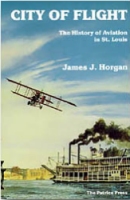
City of Flight : The History of Aviation... The History of Aviation in St. Louis by James J. Horgan The Patrice Press. |


|